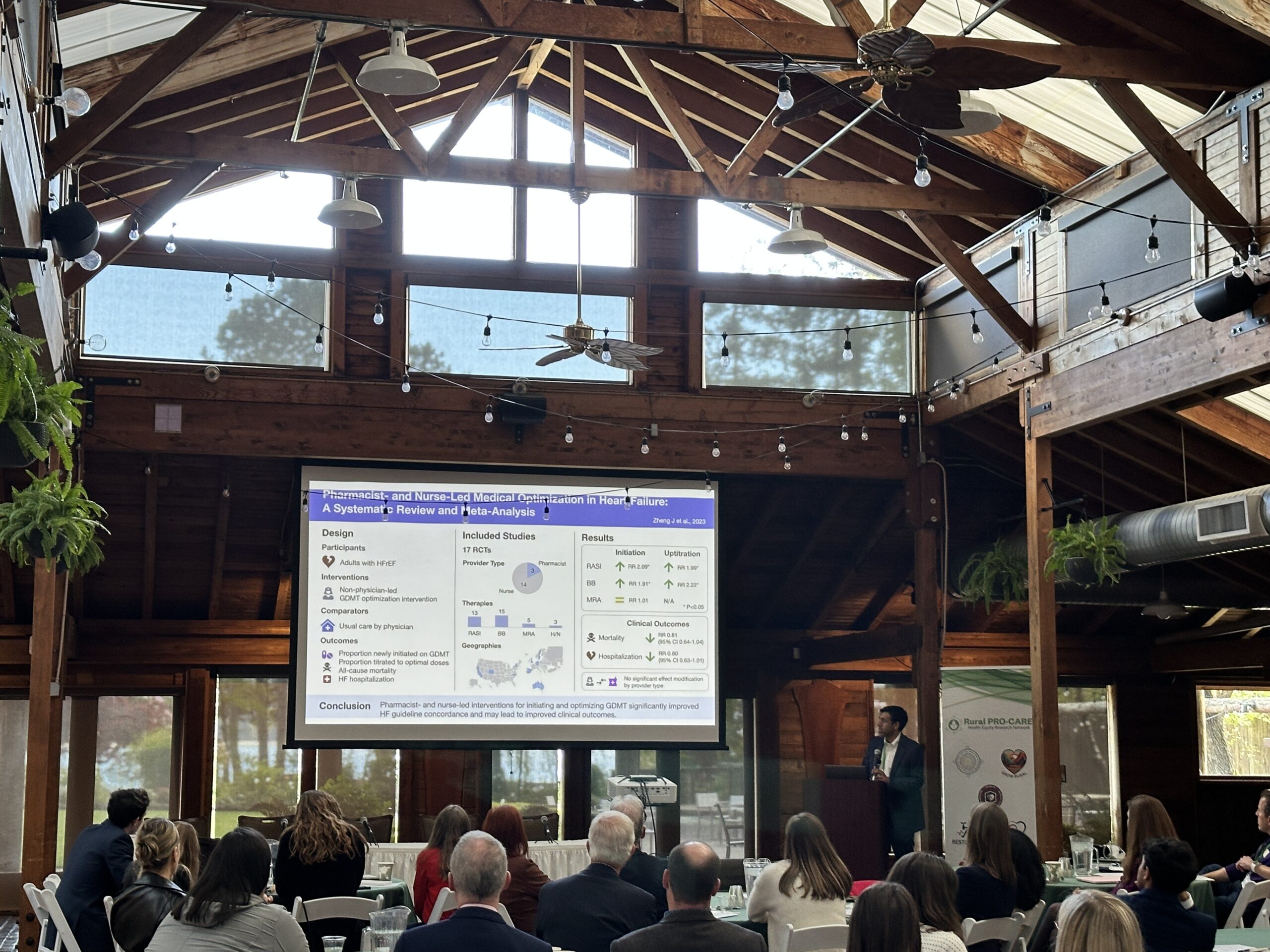Implementation and Evaluation of Pharmacist-Based Management of Chronic Heart Failure for Rural Veterans
Principal Investigators

Palo Alto Veterans Affairs Healthcare System; Stanford University
- Assistant Professor of Medicine, Cardiovascular Medicine
- Stanford Prevention Research Center

Palo Alto Veterans Affairs Healthcare System; Stanford University
- Chief of Medicine, Palo Alto VA
- Professor of Medicine, Cardiovascular Medicine

PHARM-HF Project Aims
Aim 1: Identify patient, neighborhood, and facility characteristics associated with less GDMT up titration for rural patients with HF. Using national VHA and Medicare data, we will identify the subset of rural HF patients at highest risk of sub-optimal GDMT based on a composite GDMT score.15 We will target this cohort with subsequent efforts to improve GDMT. Hypothesis: Rural patients living furthest from cardiologists and those living in neighborhoods with lower educational attainment have a lower composite GMDT score.
Aim 2: Test a novel, equity-focused, audit-and-feedback implementation strategy to increase uptake of pharmacist HF management among rural patients. Our equity-based strategy will focus on increasing pharmacist management among rural HF patients with poor access to care. Our mixed methods evaluation will compare uptake of the pharmacist program in 4 VHA intervention regions with 14 control regions and identify barriers and facilitators to increasing pharmacist management. Hypothesis: The 4 VHA regions with an equity-focused implementation strategy will have more rural HF patients managed by pharmacists than the 14 VHA regions without this dedicated implementation strategy.
Aim 3: Co-design educational materials to engage rural Veterans in HF care and GDMT optimization. This co-design process will include Veteran and pharmacist interviews and design workshops. Based on our data from a series of rural Veteran interviews (Aim 2), we anticipate the educational intervention will be multimodal including both a handbook and a website. We will then perform a randomized evaluation of this engagement tool across rural Veterans.



